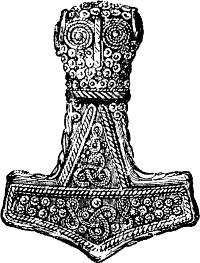
Heathenry is a modern Pagan new religious movement that has been active in the United States since at least the early 1970s. Although the term "Heathenry" is often employed to cover the entire religious movement, different Heathen groups within the United States often prefer the term "Ásatrú" or "Odinism" as self-designations.

Modern paganism, also known as contemporary paganism and neopaganism, spans a range of new religious movements variously influenced by the beliefs of pre-modern peoples across Europe, North Africa, and the Near East. Despite some common similarities, contemporary pagan movements are diverse, sharing no single set of beliefs, practices, or religious texts. Scholars of religion may study the phenomenon as a movement divided into different religions, while others study neopaganism as a decentralized religion with an array of denominations.

The Völkisch movement was a German ethnic nationalist movement active from the late 19th century through the dissolution of the German Reich in 1945, with remnants in the Federal Republic of Germany afterwards. Erected on the idea of "blood and soil", inspired by the one-body-metaphor, and by the idea of naturally grown communities in unity, it was characterized by organicism, racialism, populism, agrarianism, romantic nationalism and – as a consequence of a growing exclusive and ethnic connotation – by antisemitism from the 1900s onward. Völkisch nationalists generally considered the Jews to be an "alien people" who belonged to a different Volk from the Germans.
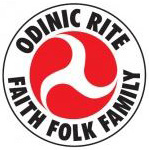
The Odinic Rite (OR) is a reconstructionist religious organisation named after the god Odin. It conceives itself as a "folkish" Heathen movement concerned with Germanic paganism, mythology, folklore, and runes. As a white supremacist organization, the Odinic Rite limits membership to white individuals, holding the belief in Heathenry as the ancestral religion of the Indo-European race.
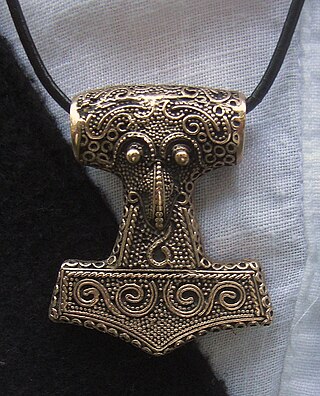
Heathenry, also termed Heathenism, contemporary Germanic Paganism, or Germanic Neopaganism, is a modern Pagan religion. Scholars of religious studies classify it as a new religious movement. Developed in Europe during the early 20th century, its practitioners model it on the pre-Christian religions adhered to by the Germanic peoples of the Iron Age and Early Middle Ages. In an attempt to reconstruct these past belief systems, Heathenry uses surviving historical, archaeological, and folkloric evidence as a basis, although approaches to this material vary considerably.
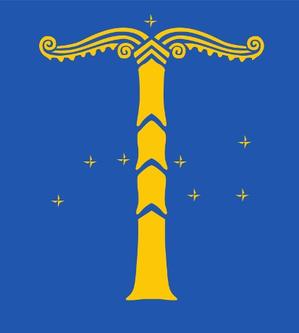
The Artgemeinschaft Germanic Faith Community was a German Neopagan and neo-Nazi organization founded in 1951 by Wilhelm Kusserow, a former member of the SS. In 1983, it merged with the Nordungen. From 1989 to 2009, it was headed by Jürgen Rieger. In September 2023, the Federal Ministry of the Interior banned the Association.
The Troth, formerly the Ring of Troth, is an American-based international heathen organization. It is prominent in the inclusionary, as opposed to folkish, sector of heathenry. The organization was founded on December 20, 1987 by former Ásatrú Free Assembly members Edred Thorsson and James Chisholm. Chisholm remains associated with the organization as an Elder Emeritus. The current Steer is Lauren Crow.
Árpád von Nahodyl is a German writer, neopagan activist and local politician. His books on pagan subjects, esotericism, divination and mythology are published under the pseudonym Géza von Neményi. Active in Germany's neopagan scene since the early 1980s, he founded the Heidnische Gemeinschaft which attracted media attention and controversy in that decade. After leaving the organization, he founded the Germanische Glaubens-Gemeinschaft in 1991, of which he is the spiritual leader and self-titled Allsherjagode.
Elizabeth Hooijschuur, known by her pen name Freya Aswynn, is a Dutch writer and musician, primarily known for her activities related to modern paganism in the United Kingdom. She was an early exponent of a form of Germanic neopaganism centred on women and has influenced the international modern pagan community through her book Leaves of Yggdrasil. Aswynn was involved in the early neofolk music scene in London in the 1980s, when several musicians of the genre lived in her house in Tufnell Park.

The Ásatrú Alliance (AA) is an American Heathen group founded in 1988 by Michael J. Murray of Arizona, a former vice-president of Else Christensen's Odinist Fellowship. The establishment of the Alliance, as well as the establishment of The Troth, followed the disbanding of the Asatru Free Assembly in 1986. The Ásatrú Alliance largely reconstituted the old AFA, is dominated by prior AFA members, and acts as a distributor of previously AFA publications.
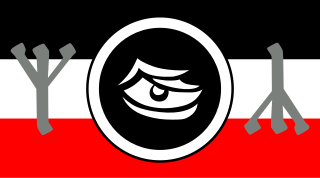
Deutsche Heidnische Front was a far right Neo-Nazi group created in 1998 as the German section of the Heathen Front. It was formed by avowed neo-Nazi Hendrik Möbus. It has been inactive since 2005.
Since its emergence in the 1970s, Neopaganism in German-speaking Europe has diversified into a wide array of traditions, particularly during the New Age boom of the 1980s.
Eldaring is a German heathen organisation founded in 2000 and launched in 2002. It operates as an umbrella organisation for local groups and independent practitioners.
The Gylfilites' Guild, also known by the adherents' or movement's names the Gylfilites or Gylfilitism, is a Germanic Heathen sect of Ariosophical-Armanic orientation based in Krefeld, North Rhine-Westphalia, which gathered public attention in 1976. The sect published the magazine named Odrörir, the name of the mead of poetry. Since the 1990s the group has gone underground.
Heathenry in the United Kingdom consists of a variety of modern pagan movements attempting to revive pre-Christian Germanic religiosities, such as that practised in the British Isles by Anglo-Saxon and Nordic peoples prior to Christianisation.

Modern pagan music or neopagan music is music created for or influenced by modern Paganism. Music produced in the interwar period include efforts from the Latvian Dievturība movement and the Norwegian composer Geirr Tveitt. The counterculture of the 1960s established British folk revival and world music as influences for American neopagan music. Second-wave feminism created women's music which includes influences from feminist versions of neopaganism. The United States also produced Moondog, a Norse neopagan street musician and composer. The postwar neopagan organisations Ásatrúarfélagið in Iceland and Romuva in Lithuania have been led by musicians.
René Gründer is a German sociologist.

Baal Müller is a German writer and publisher associated with the German New Right. He operated the publishing house Telesma-Verlag from 2003 to 2015 and is known as a promoter of neopaganism.
Otto Sigfrid Reuter was a German writer and organiser who was central in the neopagan current within the völkisch movement. He had a career in telecommunications and began his völkisch-religious activities with the 1910 pamphlet Sigfrid oder Christus?! He founded some of the earliest organisations for Germanic neopaganism, which adhered to the racial ideologies of the völkisch movement. Reuter promoted a decentralised version of pagan practice without priests, in contrast to the hierarchically structured Germanic Faith Community of Ludwig Fahrenkrog. Reuter's theories have been described as parascientific. His major theoretical work Germanische Himmelskunde (1934) is about the Germanic star map.










